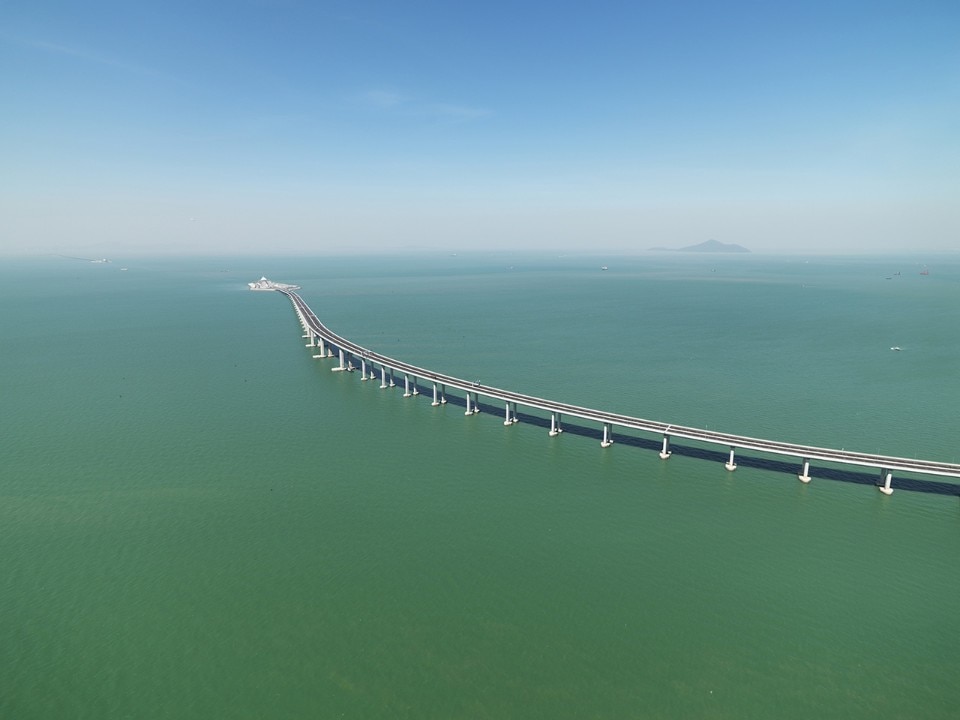The Greater Bay Area (GBA) is the brand name of a massive collective economic development pivot in Southeast China. The cities of Guangdong Province, which from Guangzhou are extended to include Hong Kong and Macau, form the largest mega-region on the globe, surpassing the greater Tokyo metropolis. The area is home to over 60 million people, which is more than the combined metropolitan-area populations of LA, Chicago, London, Toronto, Milan, Boston, Dallas and Seattle. Its total GDP ranks among the top 10 global economies (similar to South Korea), and all on a piece of land the size of the Netherlands. The Guangdong section of this area was previously called the Pearl River Delta (PRD), with the term “delta” being doubly apt if seen as the mathematical symbol for change and variation. But this region is not something new, and nor are its characteristics. Instead, it is being built upon its evolving cultural legacies.
States of exception
In terms of urbanism, perhaps the area is best known for its special economic zone (SEZ). This particular state of exception is the most familiar example of the State government playing with and manipulating the idea of borders, separate zones and dedicated rules, but it is neither the first nor the last of such tactics. According to Adrian Blackwell, in the GBA, unlike their usual function of separating, borders are used to generate differences in order to facilitate different rules of exchange among different zones. In many ways, Hong Kong was the very first SEZ. The Chinese government and business community has long used it as a way to link (and control) international exchange to the mainland. The contemporary SEZ is merely a 2.0 take on this regional strategy.
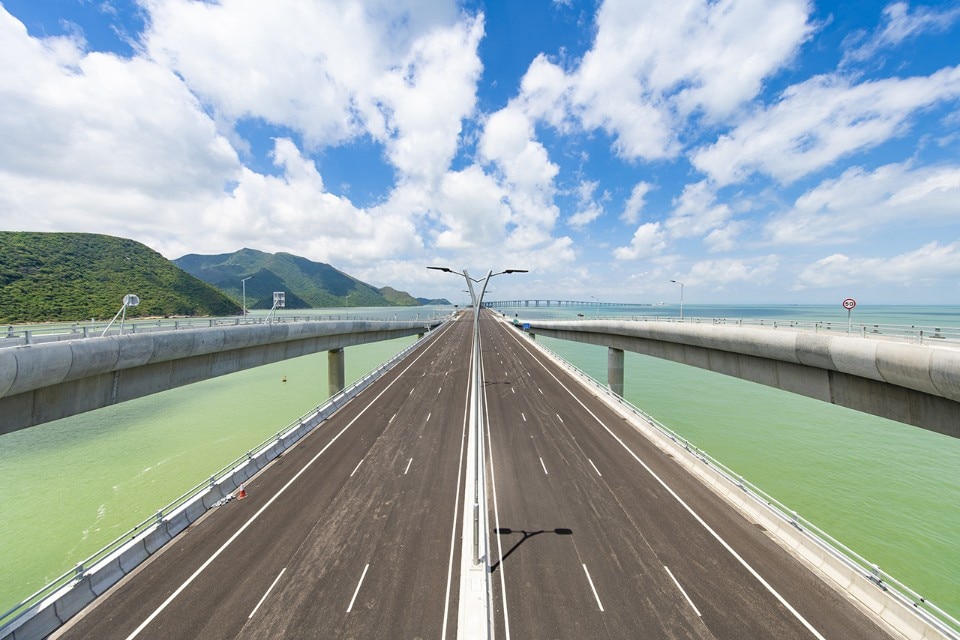
Further, the ongoing evolution of the SEZ has not stopped. One may have heard the SEZ no longer exists, but there are numerous variations. These include the western extension of Shenzhen – i.e. Qianhai (with a master plan by Field Operations) which mixes Hong Kong rules on
Shenzhen soil, and where several skyscraper-do- minated blocks are nearing completion – and Lok Ma Chau Loop (with a master plan by Arup) which recently broke ground and plans to host Shenzhen tech company headquarters in Hong Kong’s tax realities. Other SEZs are now also being distributed along the Belt and Road Initiative.
Mind the gaps
This wilful toying with borders has an even deeper cultural lineage. In some ways, the P in PRD should stand for piracy. If one looks back millennia and thinks of the open waters of the Pacific Ocean, the GBA is almost perfectly designed with its numerous islands and water networks as a haven for pirates, which is very much what it was. Both Hong Kong and Macau flanked the entrances to Canton with those who exploited the open interpretation of whose rules applied on the high seas.
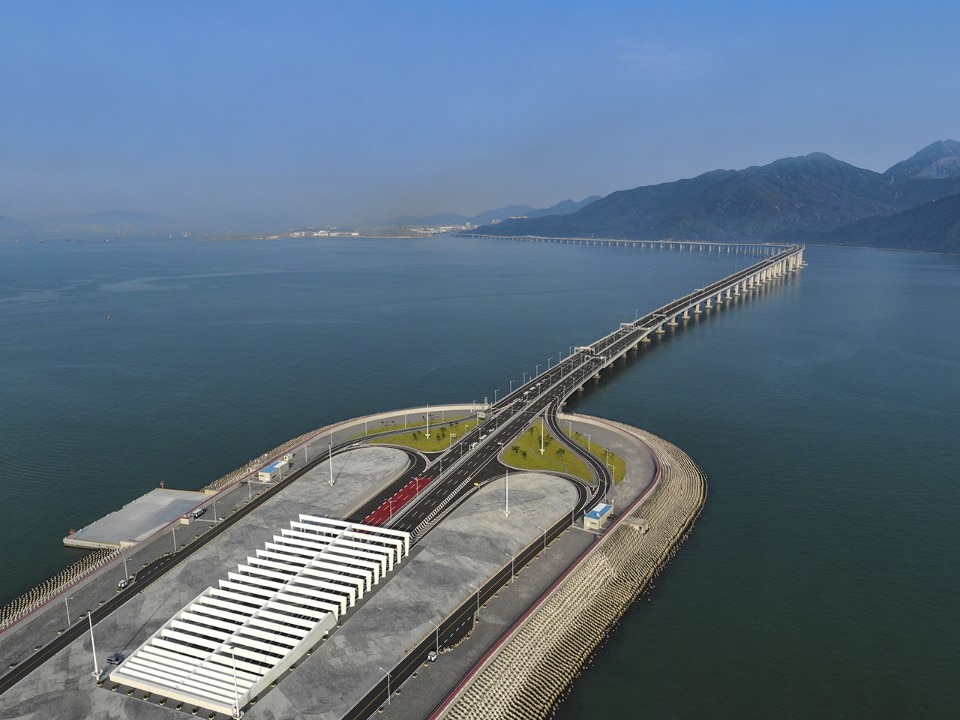
In our present time, Shenzhen is notorious for its pirated hardware ecosystem. “Shanzhai” was the local term coined in reference to pirated hardware and software, but now the word is used with pride, and is increasingly seen as denoting a system of innovation. Hong Kong itself has not shed its roots in regulatory creativity.
The financial sectors of Hong Kong are well known for their ability to ensure customers so- lid returns through an in-depth grasp of where opportunities are to be found in the rules. Meanwhile, in Macau – the “Vegas of China” – it is not mere gambling that is fuelling the city’s tourism and development.
With Chinese government regulations making it difficult for Chinese citizens to move their money out of the country, they find various mo- des of shifting sums off the mainland. Macau offers private tables – with a fairly high winning percentage of roughly 85 per cent – which some gamblers play at for days. They start in RMB and receive their winnings in whatever currency they prefer. The towering casinos are built on the foundation of Canton’s culture of economic creativity.
Productive culture
The PRD’s reputation for being the “factory of the world” is also based on estimates that around 90 per cent of mobile phones have at least one part manufactured in Shenzhen. It is a maker and industrial designer’s heaven. If you want to get something made, Shenzhen makes everything. This situation is not merely a consequence of the existence of the port and the SEZ. It is also a legacy of production that trails far back into the region’s history. Guangzhou is the historical capital of the GBA, and long ago it traded with places like the Netherlands and Venice. The now renowned Dutch porcelain, or Delftware, actually relies on technology developed in the GBA, centuries ago.
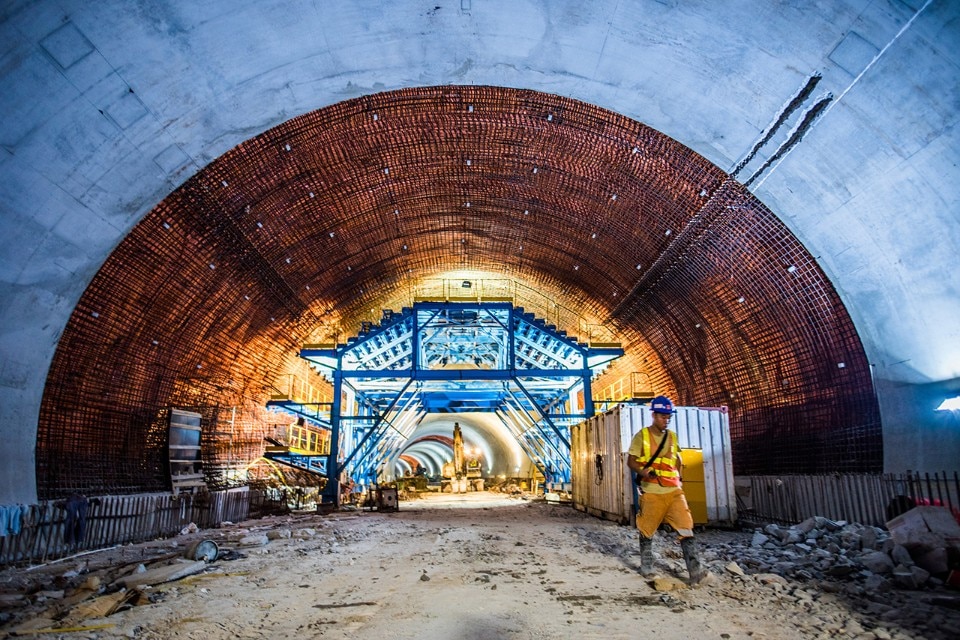
The layers of this evolution can be read in a city like Foshan, northwest of Guangzhou. It has a long craft tradition in furniture production. Hundreds of years ago, this was the home of ma- ster carpenters, fabric makers, etc. It is now filled with factories that can rapidly generate the furniture and/or businesspeople with connections to rural production networks. Today, supply-chain companies take clients around the factories in the GBA, collecting each and every component that makes up a house, and ship them to the building location in a single container.
This evolution of making can perhaps best be seen in a place like Huaqiangbei in Shenzhen. This famous electronics market is a local and tourist destination for sourcing any form of electronic good imaginable, and in endless rows of options that disappear into a distant vanishing point. However, the shift of the GBA can be seen in the public space adjacent to the market. This contemporary sleek new public space reveals the region’s ambition to jettison its industrial copycat legacy and be seen as a city of design. It is trying to manufacture a new image and culture for the area.
Infrascapes
Infrastructural manifestations have always defined the area’s global ambitions. Even the natural shape of the bay itself is an ideal protected international trade port. As well as the great depths of the existing waterways, the region’s ports were some of the first to invest in the con- tainerisation systems that emerged in the last century. Shenzhen is only called that because the rail line that the British constructed to link and trade with Guangzhou happened to cross the border at a little town called Shenzhen.
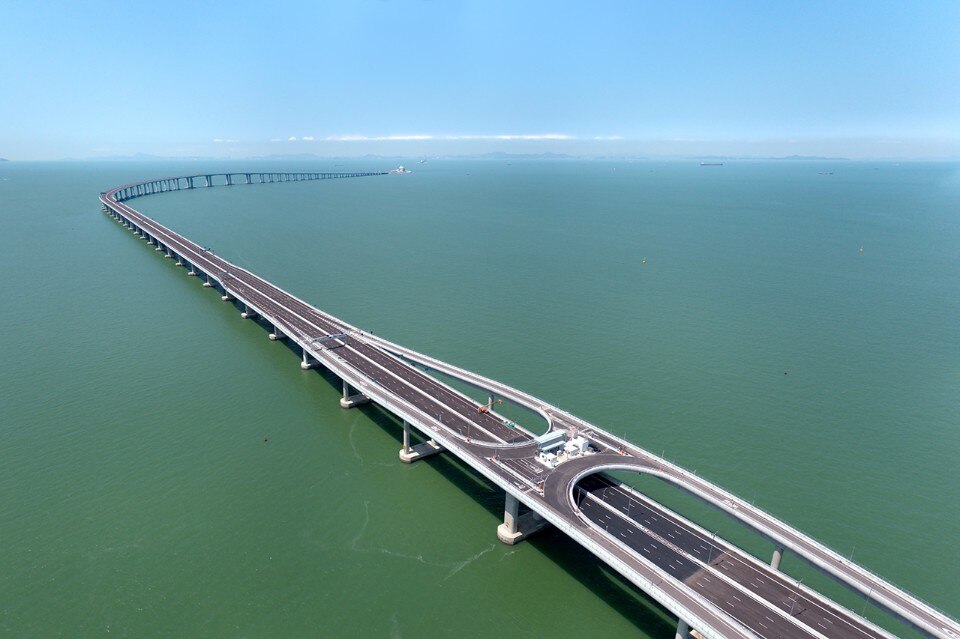
Two defining elements have recently been completed that not only signify the concept of the GBA, but also symbolise the region’s long-developing cultural realities. The first is the 55-kilo- metre-long Hong Kong-Zhuhai-Macau Bridge. Again, this relates to infrastructural heritage, but it also highlights the State’s role in the area. In many ways the bridge is not particularly functional – it has few lanes for traffic and no mass transit, for example – yet it is a built icon for the Chinese government in the region. The second headline-grabbing project is the new high-speed railway that links Hong Kong, via Shenzhen, to Guangzhou in 45 minutes. Although the speed and link to the greater Chinese high- speed network are highly valuable, what is often overlooked is the reality of the station itself. By moving passport control to the Hong Kong side for the “ease of border crossing realities”, a small portion of “Chinese land” has been cre- ated in Hong Kong. Again, this creativity with borders and infrastructure manifests itself in the Greater Bay Area.
Perhaps the thing that says most about the Greater Bay Area is the name itself. It is an English-language branding effort to give the area an identity. But in a zone with a legacy of making and copying, it says a great deal that China’s Beijing-based government chose to copy the name of the region they aspire to: the San Francisco Bay Area. Reflecting even further, this effort to create a collective identity for what were formerly perceived as a set of individual cities speaks to the future of our global cities.
A sense of shared identity takes on a different scale, particularly thanks to our evolving infrastructural links. Yet as we literally move forward faster and faster, we should often look back at our past legacies in order to better perceive our shared futures.
This article was originally published on Domus 1032, February 2019


